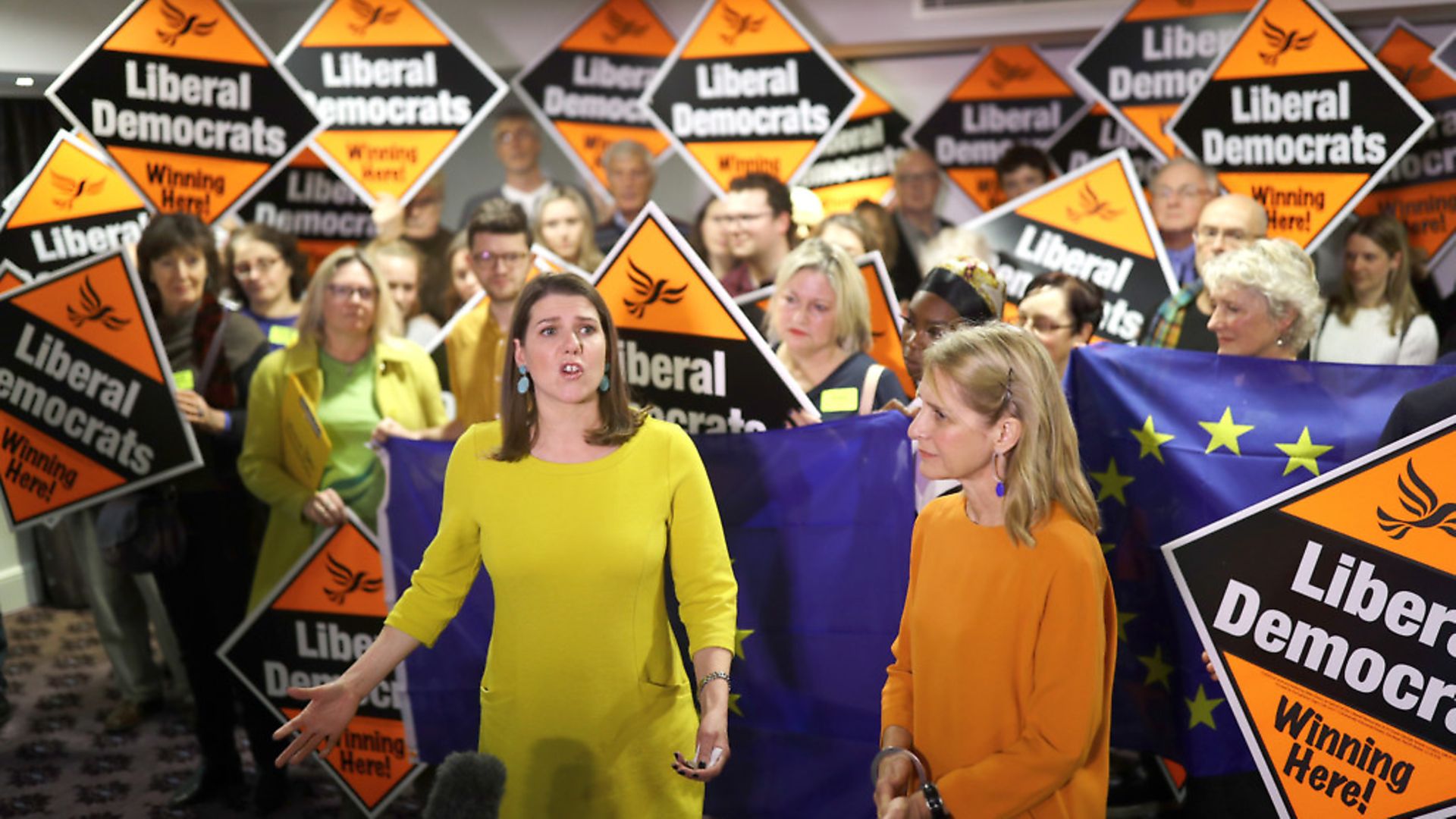
A new report has claimed the Liberal Democrats have a strong chance of unseating a number of Tories at the 2024 general election, which could help Labour and Keir Starmer’s chances at defeating Boris Johnson.
In a report titled Where Next for the Liberal Democrats? produced by think-tank UK in a Changing Europe, it claims that Lib Dem candidates could be become a serious threat to Tory MPs in several constituencies across the country.
Authored by deputy director Tim Bale and several researchers, the report outlines the devastating blow last year’s general election had on the party.
‘The general election was a not just an electoral disappointment but a disaster – so much so that [Jo] Swinson [the Lib Dem leader at the time] herself lost her seat. Not only that, but the party’s main policy aim – to reverse the Brexit decision – lay in tatters,’ researchers wrote.
‘Yet, despite these setbacks, the new electoral geography of the post-Brexit era brings with it challenges but also opportunities for the Liberal Democrats – existential questions but also, if they can exploit their new electoral coalition, some potential answers.’
These ‘answers’, analysts point out, lay in bolstering the party’s new voter base of university graduates and consolidating new territory – its ‘yellow halo’ – in London and the South East of England.
The report explained that the latest election represented a ‘partial recovery’ for the party where the number of seats where they received over 30% of the vote had almost doubled from 28 in 2017 to 50 in December 2019.
Moreover, the 91 seats in which the party is now in second place has significantly jumped up from the 66 in 2015 and the dismal 38 it scored in 2017.
In terms of voters, UK in a Changing Europe believe the supporters the party lost are being steadily replenished with a new cohort of graduates.
The party either holds now or is highly competitive in 30% of the 64 seats that are in the ‘top ten’ in terms of the relative number of graduates in the UK.
In 23 of the 29 seats that the Lib Dems could reasonably claim to be well positioned to win, they are the main challenger to the Tories, with every other party a distant third.
There is a catch, though, given 15 out of 27 Tory MPs who it would make sense to target were originally Remainers, meaning Lib Dem hopefuls will be trying to unseat relatively moderate Conservative incumbents.
But the report warns that a serious long-term decline could also face the party if it does not choose the right path.
‘The Lib Dems have now hovered at between 8 and 12 seats,’ the report reads. ‘Not so very different from the historic Liberal Party, which hovered at between six and 12 seats for the nearly four decades that elapsed between its wipe-out in 1945 and the creation of the SDP in 1982.
‘In short, while they may escape extinction, long-term paralysis looks like a distinct possibility.’
The Lib Dems also face another problem: in seats where their representatives came second, they were still beaten by a large margin.
Researchers highlighted Dominic Raab’s seat of Esher and Walton, in which it received a mammoth 18% swing to the party – and an increase in vote share from 17% to 45% – still left them 2,743 votes short of taking the seat.
Despite the uphill struggle, researchers say there is still hope if the party can refocus resources in marginal seats favouring Lib Dems candidates.
‘True, in 2010, there were nearly 140 seats where the party got over 30% of the vote, whereas by 2017 that number had fallen to 28. In December 2019, however, it partially rebounded and is now 50,’ the report read.
‘This suggests there is a reasonable number of seats where the party is not just in second place but, crucially, within realistic touching distance of the incumbent, if, that is, the party targets its efforts.’









